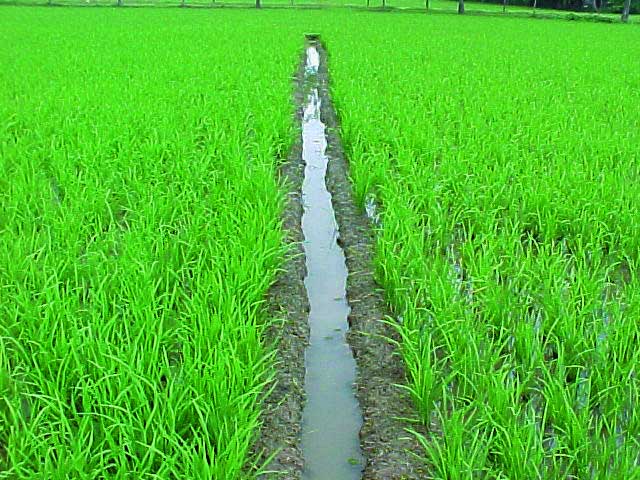Nitrogen (N) excess
 Nitrogen amount in field can be identified using the leaf color chart.What it does
Nitrogen amount in field can be identified using the leaf color chart.What it does
When plants receive too much nitrogen (N), they become more attractive to insects and diseases. It can also cause excessive growth and reduce the strength of the stems.
Why and where it occurs
Problems in excess N happens where fertilizers are relatively cheap and farmers do not understand the correct amount of nitrogen required relative to their yield goals, and the right time of N application.
How to identify

Fields with excessive nitrogen have plants that:
- look overly green
- may be healthy, but also may be lodged at maturity (especially in direct-seeded rice)
- may have thin stems
- may be prone to disease (e.g., bacterial leaf blight, sheath blight, blast) or insects (leaffolder)
There can also be patchy patterns resulting from uneven application across the field.
Similar symptoms can be caused by Phosphorus (P) deficiency where plants have dark green leaves. However, P deficient plants produce fewer tillers and have stunted growth. To confirm cause of problem, check the field and/or ask farmer about the rate of N applied.
Why is it important
Excessive N causes "luxuriant" growth, resulting in the plant being attractive to insects and/or diseases/pathogens. The excessive growth can also reduce stem strength resulting in lodging during flowering and grain filling.
Excessive use of N also has negative implications for the environment and lowers farm profits.
How to manage
- Apply sufficient N to meet the plants' needs (20 kg N for each t of grain produced).
- Identify how much N is coming from the soil and other sources (e.g., water or bacteria in the soil or water) and then apply the additional N to meet the yield goal.







